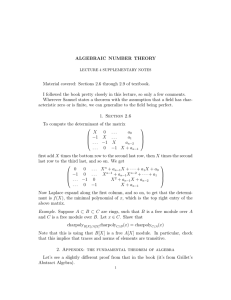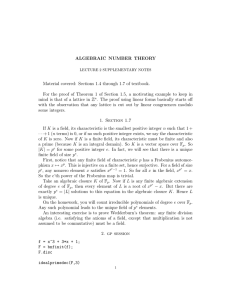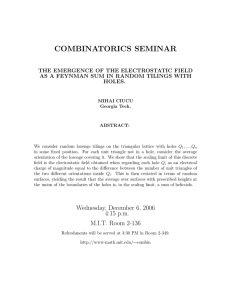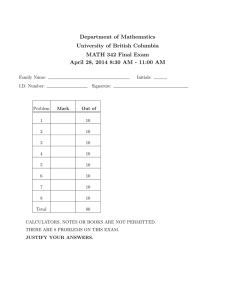k ), and H m
advertisement
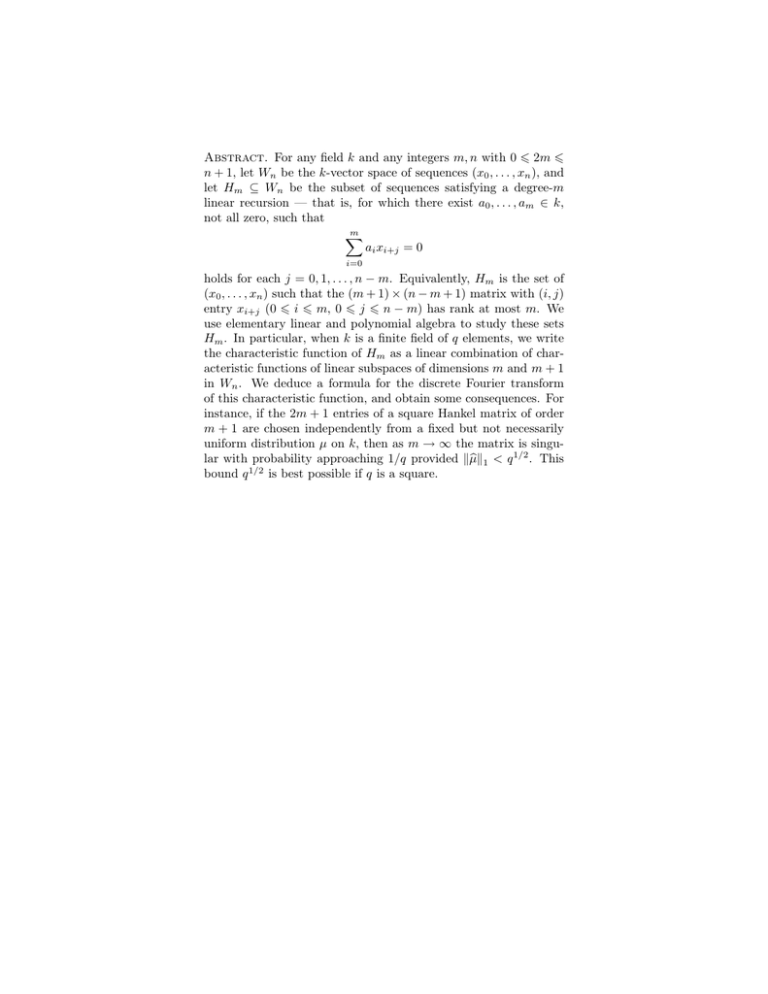
Abstract. For any field k and any integers m, n with 0 2m n + 1, let Wn be the k-vector space of sequences (x0 , . . . , xn ), and let Hm ⊆ Wn be the subset of sequences satisfying a degree-m linear recursion — that is, for which there exist a0 , . . . , am ∈ k, not all zero, such that m ai xi+j = 0 i=0 holds for each j = 0, 1, . . . , n − m. Equivalently, Hm is the set of (x0 , . . . , xn ) such that the (m + 1) × (n − m + 1) matrix with (i, j) entry xi+j (0 i m, 0 j n − m) has rank at most m. We use elementary linear and polynomial algebra to study these sets Hm . In particular, when k is a finite field of q elements, we write the characteristic function of Hm as a linear combination of characteristic functions of linear subspaces of dimensions m and m + 1 in Wn . We deduce a formula for the discrete Fourier transform of this characteristic function, and obtain some consequences. For instance, if the 2m + 1 entries of a square Hankel matrix of order m + 1 are chosen independently from a fixed but not necessarily uniform distribution µ on k, then as m → ∞ the matrix is singular with probability approaching 1/q provided µ1 < q 1/2 . This 1/2 is best possible if q is a square. bound q



